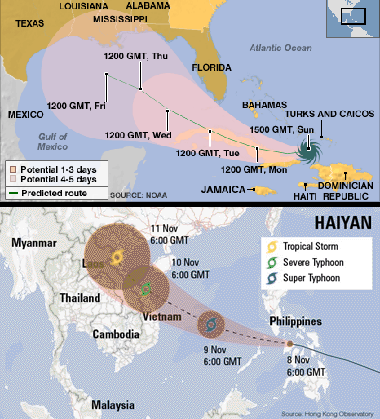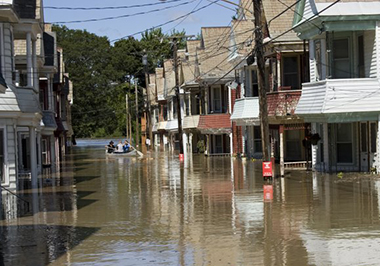Schumer, Gillibrand Announce nearly $4.5 Million in Federal Funding for UAlbany to Advance Early Warning Weather Detection
NSF Grant Will Foster Interdisciplinary Meteorology Research Between U.S. and Taiwan Universities to Examine New Techniques of Weather Prediction
 |
|
UAlbany's Atmospheric Sciences Research Center will lead a U.S.-Taiwan consortium which will advance research in early warning systems to better predict the path and course of major storms.
|
ALBANY, N.Y. (September 28, 2015) -- U.S. Senators Charles E. Schumer and Kirsten Gillibrand announced today $4,497,533 in federal funding to the University at Albany. The grant, allocated through the National Science Foundation (NSF) Partnerships in International Research and Education (PIRE) program, will fund the development of a U.S.-Taiwan consortium which will advance research in early warning systems to better predict the path and course of major storms.
Led by the University at Albany’s Atmospheric Sciences Research Center (ASRC), The US-Taiwan coalition includes Howard University and National Central University (Taiwan), National Taiwan University, and Academia Sinica (Taiwan). Working closely with disaster and weather forecast agencies in Taiwan and the US such as NOAA / National Weather Service, NOAA/National Severe Storm Laboratory, NYS Division of Homeland Security, Central Weather Bureau – Taiwan, National Science and Technology Center for Disaster Reduction -- Taiwan, the partnership will strive to better quantify trends in weather extremes on a regional scale (particularly in East Asia and the northeastern United States) through in-depth investigations of past extreme events and influences from large-scale global circulation patterns and changes in local environmental conditions.
In addition, the project aims to examine new techniques for providing probabilistic numerical weather guidance on a regional scale, and investigate the efficacy of decision-making by emergency managers based on probabilistic weather forecasts, as well as the how the information is utilized on a community level during extreme weather events.
“What if we could have predicted that Tropical Storms Irene and Lee were going to have a much greater impact inland than they did along the coast?" said Senator Schumer. "This federal funding will help our top-notch researchers and students at the University at Albany determine just that – by enabling them to develop the next generation of early warning weather prediction technology. This will provide us the critical information needed to save lives and property during future storms, as well as better prepare for the marshaling of emergency response and supplies.”
"This investment will help us better prepare for storms that are becoming more frequent and more devastating," said Senator Gillibrand. "Over the past few years New York has been hit with heavy storms and flooding - devastating our homes, schools, farms, and businesses. Funding projects like these to improve our weather prediction system is a vital investment in our infrastructure. These early warning signs will help prepare us for when the next storm hits."
 |
|
In the United States, floods cause an average of 89 fatalities and $8.2 billion in damages each year. In Taiwan, flooding has led to nearly 1,000 fatalities and over $12.8 billion (NT) in damages since 2000.
|
This breadth of research is possible only through an interdisciplinary team of experts. At UAlbany ASRC is joined by the Department of Atmospheric and Environmental Sciences, International Education, the School of Education, the College of Emergency Preparedness, Homeland Security, and Cybersecurity, and Department of Psychology.
"This exciting new international collaboration showcases the University at Albany’s singular expertise in atmospheric sciences, and our commitment to developing solutions to climate change," said UAlbany President Robert J. Jones. "I thank Senators Schumer and Gillibrand for their steadfast support, and congratulate Atmospheric Sciences Research Center Director Everette Joseph and his team at ASRC for creating a program that forges new partnerships and offers profound benefits to society."
Educating the next generation of climate scientists
The U.S.-Taiwan PIRE will also prepare a cadre of U.S.-Taiwanese atmospheric and social scientists and practitioners with disciplinary and interdisciplinary academic and research experiences geared around extreme weather and resiliency. The project will cover training and integrate U.S-Taiwan research to advance climate prediction models and weather trends particularly in northeastern U.S. and East Asia.
"Extreme weather resiliency demands improved weather and climate prediction and response strategies to strengthen the protection of life and property," said Joseph. "The U.S.-Taiwan Partnerships in International Research and Education program will prepare a new generation of U.S.-Taiwanese atmospheric and social scientists and practitioners with disciplinary and interdisciplinary academic and research experiences geared around extreme weather and resiliency."
Developing global solutions for the impact of climate change
Globally, flooding impacts over 96 million people per year, most within developing countries, at a mean cost of over $13.7 billion. In the United States, floods cause an average of 89 fatalities and $8.2 billion in damages each year. In Taiwan, flooding has led to nearly 1,000 fatalities and over $12.8 billion (NT) in damages since 2000. These numbers are expected to grow due to climate change, population growth, and increased vulnerability and exposure to extreme weather events.
The NSF PIRE program is designed to advance the frontiers of science and engineering – and forge robust collaborations with scientific expertise around the world. PIRE helps catalyze strong international engagement by the U.S. science and engineering community. Projects work to generate new knowledge and discoveries; promote a diverse, globally engaged U.S. workforce; and build the institutional capacity of U.S. institutions to engage in productive international collaborations.
"By linking together researchers from around the world, PIRE allows us to leverage U.S. dollars and improve scientific outcomes," said Rebecca Keiser, head of NSF’s Office of International Science and Engineering, which manages PIRE. "These rich partnerships will tackle some of today’s most pressing research questions, from predicting natural disasters to understanding intricacies of the human brain."
Within NSF, PIRE is also supported by the Experimental Program to Stimulate Competitive Research (EPSCoR) and all programmatic directorates. NSF support – which funds the U.S. portion of the collaboration – is leveraged by partnerships with the U.S. Agency for International Development and by counterpart funding agencies in China, Finland, France, Germany, India, Japan, Mexico, Russia, Spain, South Korea and Taiwan.
Learn more about the NSF's Partnerships in International Research and Education program.
![]() For more news, subscribe to UAlbany's RSS headline feeds
For more news, subscribe to UAlbany's RSS headline feeds
A comprehensive public research university, the University at Albany-SUNY offers more than 120 undergraduate majors and minors and 125 master's, doctoral and graduate certificate programs. UAlbany is a leader among all New York State colleges and universities in such diverse fields as atmospheric and environmental sciences, business, education, public health,health sciences, criminal justice, emergency preparedness, engineering and applied sciences, informatics, public administration, social welfare and sociology, taught by an extensive roster of faculty experts. It also offers expanded academic and research opportunities for students through an affiliation with Albany Law School. With a curriculum enhanced by 600 study-abroad opportunities, UAlbany launches great careers.


